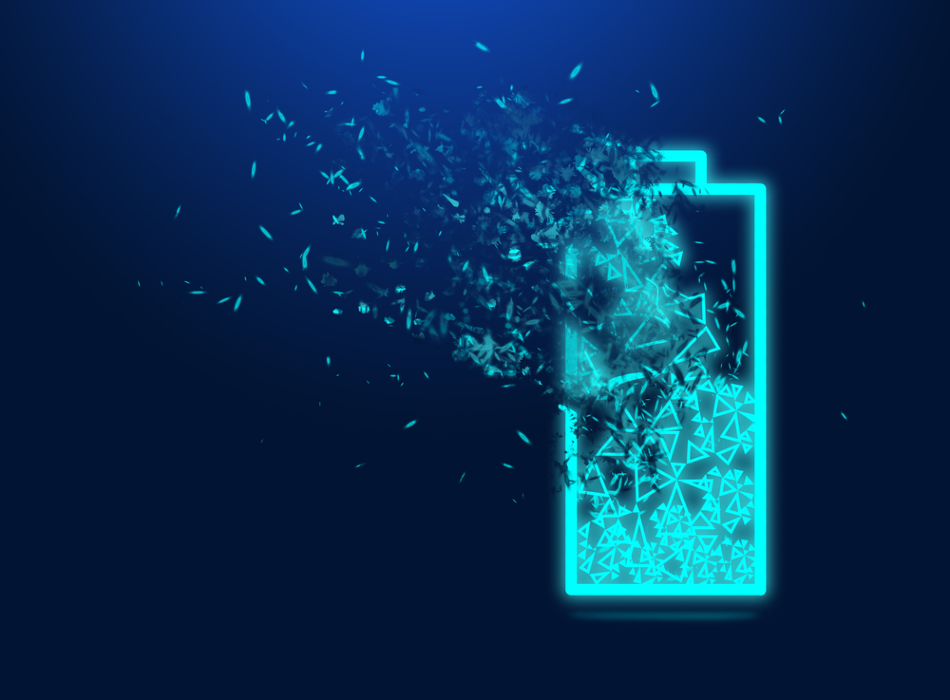
Image Credit: New Africa/Shutterstock.com
New research suggests a solution to problems that hinder the development of lithium-sulfur rechargeable batteries and prevent them from replacing their conventional lithium-ion counterparts.
Mobile technology has come a long way since April 1973 when Motorola engineer Martin Cooper stood on a street corner in Manhatten with a 9-inch-long block of plastic and made the world’s first cell-phone call.
Our gradual abandonment of the copper wire and increased reliance on rechargeable batteries has grown in lock-step with these developments.
The huge boom in personal electronics, portable devices, and mobile technology has ensured that rechargeable batteries are heavily used by the electronics industry and a considerable proportion of the population. As these devices become more sophisticated, their power demands become more significant.
Advancing the potential of rechargeable batteries has become of great interest to scientists and engineers. There has been an increased focus on finding a more efficient replacement for lithium-ion based batteries, which were first developed in the 1970s but were commercialized the following decade.
One possible candidate is the lithium-sulfur battery (LSB), which consists of a sulfur-based cathode and lithium anode submerged in a liquid electrolyte.
The UK company OXIS Energy is one of many that believes lithium-sulfur batteries will spark a revolution in the rechargeable battery market. OXIS’s cost-effective lithium anode, sulfur cathode, protective electrolyte and separator are lightweight and feature natural nontoxicity.
However, LSBs are not without their issues.
A team of researchers at Daegu Gyeongbuk Institute of Science and Technology, lead by Professor Jong-Sung Yu, proposes a novel technique to eliminate these problems and make LSB batteries a more viable choice in future portable devices.
The team’s study is published in the journal Advanced Energy Materials.
The Pros and Cons of Lithium-Ion Batteries
The main advantage of lithium-sulfur batteries (LSBs) is the fact that they are incredibly low-cost to produce. This is because sulfur is common and easy to source. LSBs also have a higher energy density, with current estimates suggesting that the best LSBs provide energy per weight that is twice that of the current generation of lithium-ion batteries.
One of the main problems with LSBs is the fact that, during the battery’s discharge cycle, soluble lithium polysulfides (LiPS) form at the cathode. From here, they diffuse into the electrolyte separator and travel to the anode. This causes the anode to dissolve severely, damaging the capacity and lifespan of the battery.
Click here for more information on materials-related equipment.
As sulfur is non-conducting, a porous conductive material has to be added to an LSB to accommodate sulfur and trap LiPS at the cathode. This prevents them from degrading the anode. Researchers have previously experimented with structures made from carbon to solve this problem. However, while these carbon-based host structures are conductive, they fail when it comes to trapping LiPS.
While LSBs hold a lot of promise, they need to be further developed to replace their lithium-ion counterparts. Daegu Gyeongbuk Institute of Science and Technology hopes to create a system that can resolve the LiPS issue.
Solving the Dissolving
Jong-Sung Yu’s team put forward a novel host structure platelet ordered mesoporous silica (pOMS), which may initially seem like an odd choice to replace the carbon structures mentioned above, as the silicas are non-conductive. Despite this, the silicas — low-cost metal oxides — are polar, and have demonstrated the ability to attract and capture other polar molecules such as the LiPS.
The team suggests that the introduction of a conductive carbon-based agent to the pOMS results in the solid sulfur dissolving into the electrolyte. As it diffuses, it is drawn towards the conductive carbon element, limiting the production of LiPS. Despite the non-polar nature of the silica, the sulfur still plays a role in electrochemical reactions. While this occurs, the LiPS are trapped by the cathode and prevented from dissolving the anode.
Comparing the performance of this system against an analogous porous-carbon host structure, the team found that while the more conventional carbon set up has an initial high capacity, this quickly drops away as a result of the LiPS weakly interacting with the carbon structure. Their pOMS arrangement, however, retains more sulfur through continuous charge / recharge cycles.
During testing, scientists found LSB displayed stability on up to 2000 continuous cycles. One of the most surprising outcomes of the study is the fact that host structures within LSBs do not actually have to be so conductive after all.
Previous to this work, researchers dismissed non-conductive silica as an efficient sulfur host, and few expected such a composition to outperform carbon alternatives.
The net result is the widening of the scope for host material selection for future LSB development. Companies such as OXIS Energy will likely pay particular attention to this development, meaning the days of the lithium-ion rechargeable battery could be numbered.
References and Further Reading
Lee. BJ, Kang. TH, Lee. HY, et al. (2020) Revisiting the Role of Conductivity and Polarity of Host Materials for Long-Life Lithium-Sulfur Battery. Advanced Energy Materials. Available at: https://doi.org/10.1002/aenm.20190393
Disclaimer: The views expressed here are those of the author expressed in their private capacity and do not necessarily represent the views of AZoM.com Limited T/A AZoNetwork the owner and operator of this website. This disclaimer forms part of the Terms and conditions of use of this website.